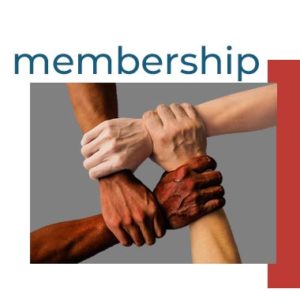Avoiding Copyright Entanglement
Don’t Get Caught Making Costly Copyright Mistakes
One of the best things about the internet is that we can instantly find whatever we’re searching for. Often when creating presentations or blog posts, Google may be our first and only stop to search for images and other media. However, that might get you into hot water with copyright laws – and the trickiest part is that it’s not always apparent which images/materials/etc. are copyrighted and which are fair use.
There’s been an increasing amount of services that have popped up recently that crawl the web on behalf of copyright holders and issue cease-and-desist style emails to individuals and businesses. These are called DMCA Takedown Notices – pursuant to the Digital Millenium Copyright Act. Many recipients assume that the scripted email is a scam – but that would be a mistake. Additionally, these entities ask for a significant chunk of change to “resolve” the issue. They don’t just want you to take down the image or text…they want you to pay up, too.
One of the frontrunners in this up and coming field is PicRights LTD. To be clear, PicRights and businesses like it do not own any of the copyrights, and they do not operate as a law firm. They act as enforcers for a large client base – including major photo agencies such as Agence France-Presse, Design Pics Inc, CartoonStock Ltd, The Associated Press, and others. These clients use companies like PicRights to pursue copyright enforcement, which happens mostly via email. Typically if you’re targeted by an operation like this, you’ll receive an email notice with screenshots of the copyright infringement and instructions for how to remit payment.
Often, recipients of these notices assume they can just remove the copyrighted images and ignore the payment part. And unfortunately, a number of these emails end up caught in spam filters or in an “other” inbox. The bad news is that these companies and their claims of copyright infringement are legitimate, and the claims are frequently referred to real law firms for further action. If you thought you could just ignore the problem until it goes away, you’ll need to think again.
One bright spot is that it seems PicRights and others like them are open to negotiation. If you are an individual, a nonprofit, a school, etc. you may be able to leverage that status to bring down the amount they’re asking for. The first amount they demand should be considered an opening offer – there is almost always room to counter. You should also look into the copyright claims to see if the images have been registered with the US Copyright Office – if they’re not registered, the owner has to register the images before bringing a lawsuit in the US. And if you’ve payed to properly license the images, you can submit proof of that to get them to drop the claim. If you’re not sure if you bought a license or not, you should contact the licensing agent and inquire if you or your business have purchased one for the image in question.
You’ll also want to consider if your use of the image/media falls under the “fair use” defense, or if it’s in the public domain:
Fair Use
- Limited use of copyrighted works
- Educational purposes
- Analysis
- Reviews
- Ex: quotes with sources cited, or parody/satire
- This can be tricky – what constitutes fair use for one type of medium may not be fair use for another
- The work must always be properly attributed
- You should consider consulting with a copyright lawyer if you believe you’ve been issued a DMCA takedown for fair use of a creative work – this is a frequently misunderstood concept that can lead to costly legal battles
Public Domain
- Creative works not protected by copyright, patent, or trademark laws
- Creator(s) of the work have been dead for over 70 years and/or copyright protections have lapsed for 70 years
- As of Jan. 1st, 2020 – all works published in the US in 1924 or earlier (except certain sound recordings per the Music Modernization Act)
- Works that an author/creator has dedicated or released into the public domain by using a creative commons license and waiving their copyright rights
- Be aware: certain collections of public domain works may fall under copyright protections as a compilation
- Ex: Shakespeare, Sherlock Holmes, works produced by the government, laws, scientific theorems, facts, etc. are not protected by copyrights
- Can be used for personal and commercial purposes free of charge
Charging hundreds or even thousands of dollars for an image that could’ve been licensed for a fraction of that amount may feel like extortion…and it’s no doubt that these third-party businesses are making a decent profit from pursuing these claims. But unfortunately, there’s no good legal excuse for copyright infringement, whether it was intentional or not. We’ve even heard of nonprofits being contacted for images on presentation slides that were created by outside presenters. That’s why it’s so important that you and your colleagues all understand the importance of avoiding copyrighted images and that you spread the word – this is truly a case where an ounce of prevention is worth a pound of cure.
So how can you avoid this pickle? By following a few simple principles and ensuring competency around copyright issues on the part of your staff. What follows are some best practices and resources from our own internal guidelines, shared with you:
- Use websites with a stock of creative commons/copyright-free images when looking for materials. We suggest the following:
- Whenever you find an image online (such as through a google search), start from the assumption that it’s copyright protected. Do your due diligence in seeking out the copyright holder and inquiring about permissions. Check the metadata through Google Images for more information.
- Whenever possible, create your own images – photographs, charts, logos, etc. that you or another employee created are all advisable. Employers generally own the copyright of works created as part of an employee’s duties.
- Run content (especially for blog posts, etc.) through online plagiarism checkers prior to publishing – this will alert you to any issues beforehand.
- Consider opening an account with a stock photo agency if budget allows- and make sure to follow the terms and conditions of this license strictly.
- Get familiar with the different types of licenses, and read the terms of each closely. Especially with creative commons (CC) licenses, prior copyright permissions, re-worked or manipulated images, etc. Consider consulting with a copyright specialist or legal counsel if there is any confusion.
- Train staff on copyright law and these best practices. All it takes is a small mistake to cost you hundreds or even thousands of dollars in statutory damages – and not being aware of copyright laws doesn’t excuse the infringement or shield you from the costs incurred by these mistakes.
By following these principles, you and your staff can avoid breaking copyright laws and receiving emails from PicRights and others like them. Using images is a great way to add visual interest to presentations and other content – but we must ensure that we’re doing this responsibly and legally.
The contents of this blog post do not, and are not intended to, constitute legal advice. You are advised to seek legal counsel for any specific issues. The information provided here is for educational and informational purposes only. All liability with respect to actions taken or not taken based on these contents are hereby expressly disclaimed.








